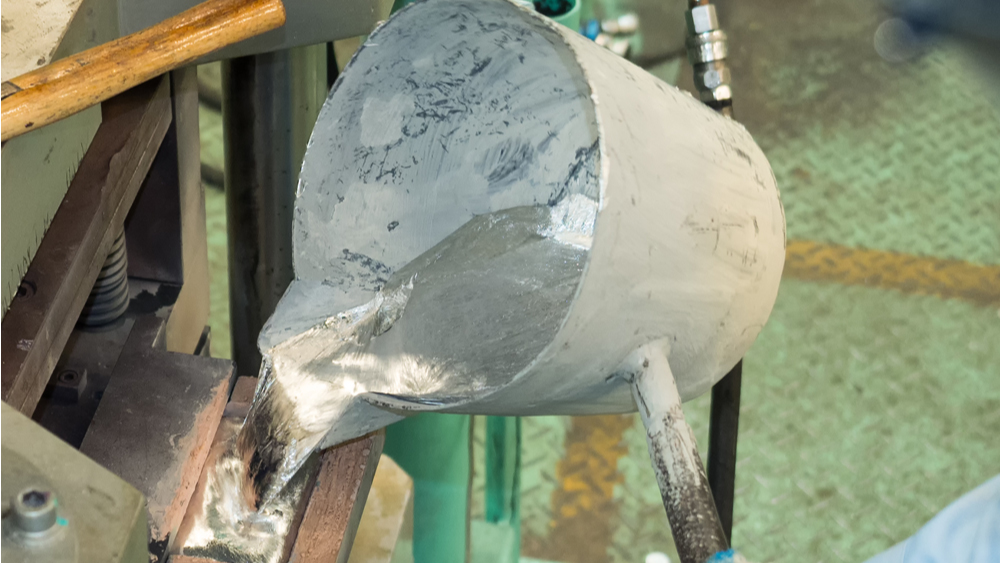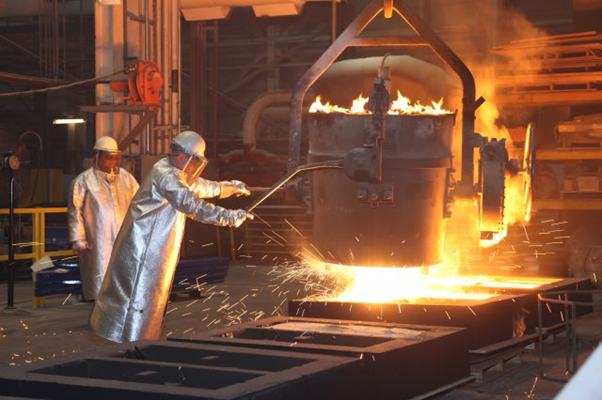Why Aluminum Foundry is indispensable for current projects
Wiki Article
A Comprehensive Overview to the Different Kinds and Use Aluminum Foundry
The world of aluminum factory incorporates numerous casting techniques, each offering special applications. From the flexibility of sand casting to the precision of die casting, these approaches cater to various manufacturing demands. Investment spreading supplies intricate layouts, while permanent mold and mildew spreading stresses toughness. Understanding the attributes of light weight aluminum alloys is important for optimizing these processes. Checking out the subtleties of each spreading strategy discloses critical insights for efficient job implementation. What aspects should one take into consideration when picking one of the most suitable approach?Review of Light Weight Aluminum Shop Processes
Aluminum foundry procedures encompass a series of techniques used to shape and cast aluminum into various kinds. These procedures can be extensively classified right into melting, molding, and completing. The initial step includes melting light weight aluminum, commonly executed in heaters that reach heats to attain a fluid state. When melted, the light weight aluminum is put into molds, which specify the final form of the actors product.Several molding techniques exist, such as die spreading and investment spreading, each offering distinctive advantages depending on the preferred precision and complexity of the last product. After the aluminum has cooled and strengthened, the casting undertakes finishing procedures, which might include machining, surface therapy, and setting up. These steps assure that the final item fulfills certain tolerances and surface quality requirements. Together, these procedures form a thorough strategy to aluminum spreading, accommodating varied commercial applications and product demands.
Sand Spreading in Aluminum Foundries
Sand casting is a basic process in light weight aluminum foundries, identified by its usage of sand molds to shape liquified metal. This technique provides numerous advantages, including cost-effectiveness and versatility, making it ideal for a wide variety of industrial applications. Recognizing the ins and outs of the sand casting process is essential for enhancing manufacturing and accomplishing desired product buildings.Sand Casting Refine Overview
The sand casting procedure offers as a fundamental technique in light weight aluminum foundries, assisting in the production of intricate metal elements. This process starts with the prep work of a sand mold, which is developed by compacting sand around a pattern that represents the end product. As soon as the mold and mildew is set up, liquified aluminum is put right into the tooth cavity, allowing it to take shape. After cooling, the mold is escaped to disclose the actors part. Sand spreading is notable for its adaptability, suiting various shapes and sizes, from small components to huge frameworks. In addition, this approach makes it possible for the unification of complex designs, making it a preferred choice for many sectors requiring customized aluminum components.Benefits of Sand Casting

Applications in Industries
Casting procedures play an essential function in numerous industries, with sand spreading being a prominent method for light weight aluminum applications. This technique is extensively made use of in auto manufacturing, allowing for the production of engine blocks, transmission instances, and various architectural components. Furthermore, the aerospace field leverages sand casting to produce light-weight yet durable parts, adding to sustain efficiency and performance. The electric sector additionally gains from sand-cast aluminum elements, such as real estates and enclosures, which supply durable defense for delicate devices. Furthermore, the building industry uses sand spreading for architectural components and fixtures, showcasing light weight aluminum's versatility. In general, sand casting in light weight aluminum foundries offers multiple markets, meeting diverse needs while enhancing product residential properties and production efficiency.Pass Away Spreading Techniques and Applications
Die spreading is an accuracy production procedure utilized to generate complicated metal get rid of high dimensional accuracy and superb surface area coatings. This method includes requiring molten light weight aluminum into a mold and mildew under high stress, ensuring that even elaborate designs can be replicated with amazing consistency. 2 main die casting techniques are hot chamber and cool chamber pass away spreading. Hot chamber die spreading is appropriate for metals with reduced melting points and enables faster production cycles, while cold chamber die spreading is perfect for higher melting factor steels and supplies greater control over metal circulation.Applications of die casting period different sectors, including automobile, aerospace, and electronics. Elements such as engine blocks, braces, and housings take advantage of the stamina and lightweight homes of aluminum. The versatility and performance of die spreading make it a necessary process in creating premium aluminum components that satisfy rigorous sector requirements.
Financial Investment Casting: Accuracy and Detail
Investment casting is an advanced manufacturing process recognized for its capacity to create intricate get rid of high precision. This strategy discovers applications across different industries, including aerospace and auto, where detail is vital. The advantages of financial investment spreading, such as decreased product waste and enhanced surface area finish, make it a favored selection for numerous designers.Process Introduction and Techniques
Utilizing financial investment spreading, suppliers achieve remarkable precision and detailed information in light weight aluminum components. This process starts with developing a wax pattern, which is coated in a ceramic shell. Once the shell hardens, the wax is thawed and drained, leaving a dental caries for the molten aluminum. The aluminum is after that poured into the mold, permitting fine attributes and complex geometries. After cooling down, the shell is escaped, disclosing the aluminum component. Strategies such as vacuum investment casting improve precision by decreasing air entrapment, while stress spreading supplies enhanced surface area coating. This thorough procedure not just assures dimensional precision however additionally lessens product waste, making it a reliable choice for generating top notch light weight aluminum components in various sectors.Applications in Industries
The remarkable accuracy and complex information achieved via financial investment spreading make it a favored approach in numerous markets. This method is particularly noticeable in aerospace, where parts require tight resistances and complex geometries. In the auto field, financial investment spreading is used for creating components like engine blocks and transmission housings, guaranteeing sturdiness and performance. Additionally, the medical industry benefits from investment spreading to create specific tools and implants that fulfill rigorous regulatory requirements. The adaptability of aluminum shop investment casting enables the production of lightweight yet strong parts, making it suitable for electronic devices and consumer goods also. Overall, financial investment spreading continues to play a crucial role in enhancing item quality across varied applications.Benefits of Investment Casting
When accuracy and elaborate information are paramount, investment casting stands apart as a very beneficial production method. This strategy enables for the production of complex geometries with tight tolerances, making it suitable for applications requiring high accuracy. The procedure entails creating a wax model that is coated in a ceramic shell, which is after that warmed to get rid of the wax and harden the covering. This results in a mold that captures fine information incredibly well. In addition, financial investment casting reduces material waste, as it can create near-net shapes, lowering the demand for comprehensive machining. The adaptability of products used, consisting of numerous light weight aluminum alloys, better boosts its appeal, making it a favored selection in sectors such as aerospace and auto.Permanent Mold And Mildew Spreading: Strength and Sturdiness
Various casting techniques exist, irreversible mold spreading stands out for its capacity to generate elements with phenomenal stamina and toughness. This technique makes use of a reusable mold and mildew, usually made from steel, which permits fast warmth transfer and boosted mechanical homes in the cast product. The process leads to a fine-grained structure, boosting stamina while decreasing porosity contrasted to sand spreading.Long-term mold spreading is especially beneficial for producing components needing high tensile strength and exhaustion resistance, making it appropriate for aerospace and auto applications. The regulated cooling price in the molds adds to uniformity in the microstructure, further boosting the toughness of the components. In addition, this method can attain detailed styles and limited tolerances, which are vital in high-performance applications. Overall, long-term mold and mildew spreading supplies a trusted service for suppliers seeking robust and durable light weight aluminum elements.
Common Aluminum Alloys and Their Attributes
Recognizing the different light weight aluminum alloys is important for suppliers aiming to improve efficiency in irreversible mold and mildew casting applications. A number of usual aluminum alloys exhibit unique qualities matched for particular uses.
For applications needing light-weight and excellent resistance to heat, the 6061 alloy is favored for its adaptability and weldability. On the various other hand, the 7075 alloy, known for its high strength-to-weight ratio, is generally used in aerospace applications. Each alloy gives unique benefits that suppliers must consider to guarantee peak performance in their particular applications.
Choosing the Right Light Weight Aluminum Foundry Process for Your Job
Choosing the proper aluminum factory process is necessary for attaining excellent outcomes in any production task. Numerous techniques, such as sand casting, die spreading, and financial investment spreading, deal unique advantages tailored to details demands. Sand spreading is economical and flexible for big parts, while die spreading succeeds in generating high-volume, dimensionally specific elements. Financial investment casting is favored for detailed layouts and exceptional surface coating.Aspects influencing the selection of procedure consist of the desired intricacy, manufacturing volume, and spending plan restrictions. Furthermore, the particular aluminum alloy picked may determine the suitable process, as particular alloys do better under details spreading problems. Recognizing the job's needs and the attributes of each method aids in making a notified decision. Inevitably, selecting the appropriate aluminum shop process not just improves item high quality yet also maximizes production performance, resulting in effective outcomes in producing endeavors.
Often Asked Questions
What Industries Mostly Make Use Of Aluminum Factory Products?
Aluminum factory items are primarily Aluminum Foundry used in the auto, aerospace, consumer, and building and construction goods industries. These sectors gain from aluminum's light-weight, corrosion-resistant buildings, making it an excellent option for different applications and parts.Just How Does Light Weight Aluminum Recycling Impact Foundry Workflow?
Light weight aluminum reusing greatly enhances foundry procedures by decreasing raw material expenses, lessening waste, and advertising sustainability. It enables factories to generate high-quality aluminum products while lowering power usage and ecological influence during the manufacturing process.What Are the Environmental Considerations in Aluminum Foundries?
Environmental factors to consider in light weight aluminum shops consist of energy usage, greenhouse gas discharges, waste management, and resource sustainability. Effective strategies can lessen eco-friendly impacts, improve recycling efforts, and advertise cleaner production methods, making certain a balance in between industry and environmental health and wellness.Exactly How Can I Guarantee Quality in Light Weight Aluminum Castings?
To assure high quality in aluminum castings, one have to apply rigid quality assurance measures, make use of exact molding methods, monitor temperature level and alloy structure, and perform extensive evaluations throughout the spreading procedure to identify and fix prospective defects. Aluminum Foundry.What Are the Common Flaws in Aluminum Castings?
Usual problems in light weight aluminum castings consist of porosity, shrinkage, additions, surface imperfections, and dimensional inaccuracies. These problems can occur from inappropriate mold and mildew layout, insufficient pouring methods, or insufficient alloy make-up, ultimately influencing the casting's general performance and high quality.From the adaptability of sand casting to the accuracy of die casting, these techniques provide to different manufacturing requirements. Financial investment casting uses intricate styles, while irreversible mold and mildew casting stresses toughness. Techniques such as vacuum cleaner financial investment casting boost accuracy by lowering air entrapment, while pressure casting supplies boosted surface coating. Numerous approaches, such as sand casting, die spreading, and financial investment casting, offer distinctive benefits customized to particular demands. Sand spreading is cost-effective and flexible for big components, while die spreading excels in producing high-volume, dimensionally exact elements.
Report this wiki page